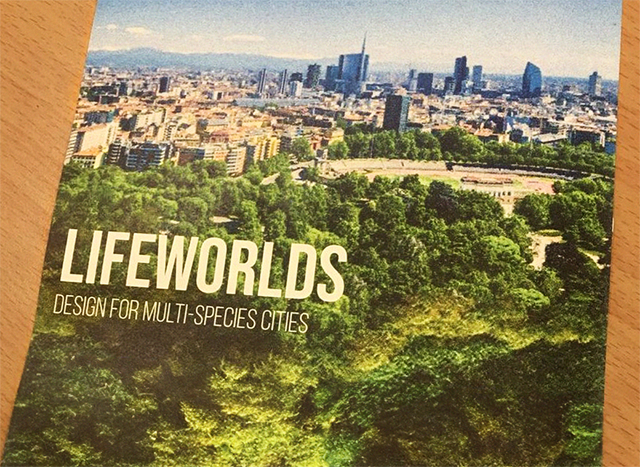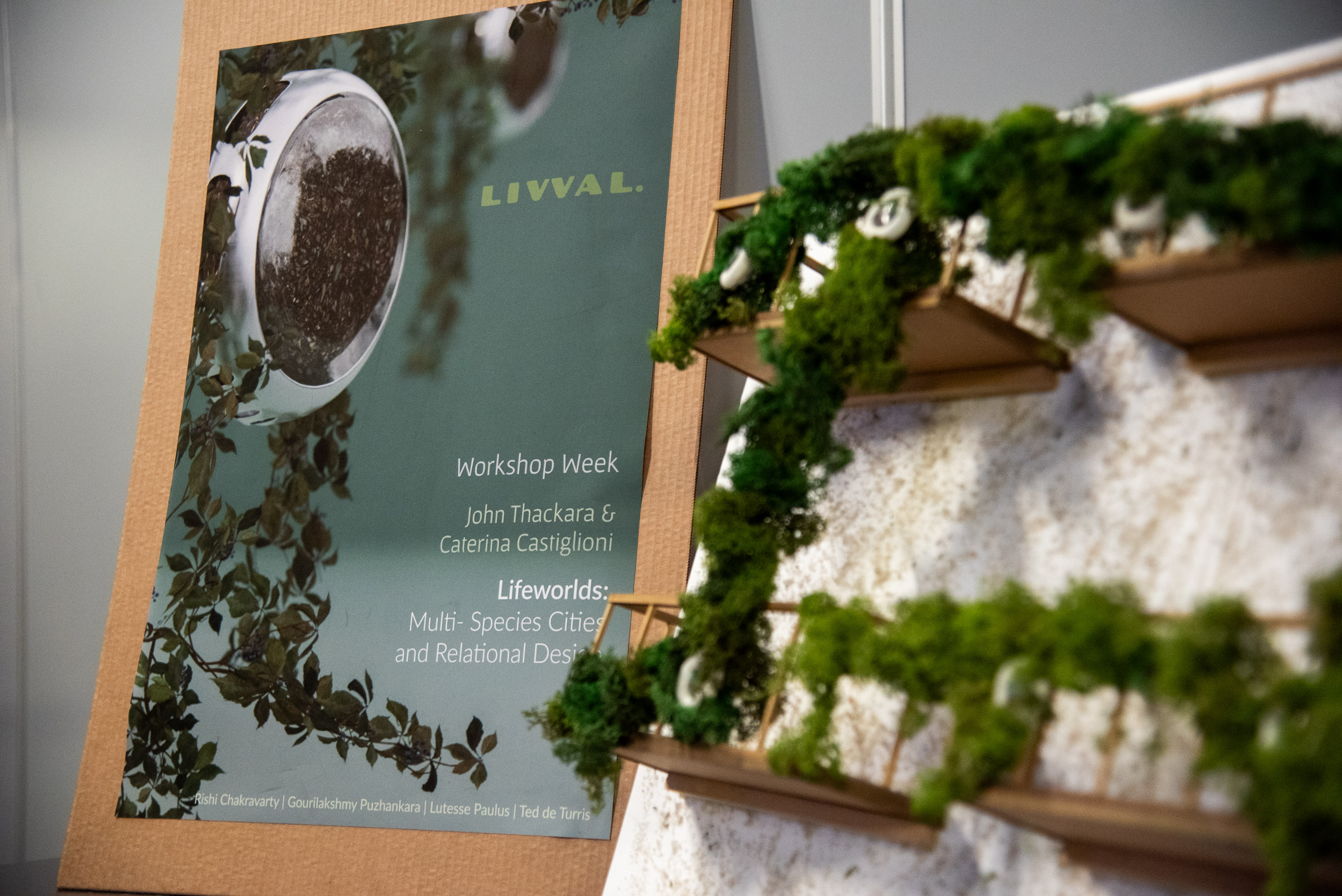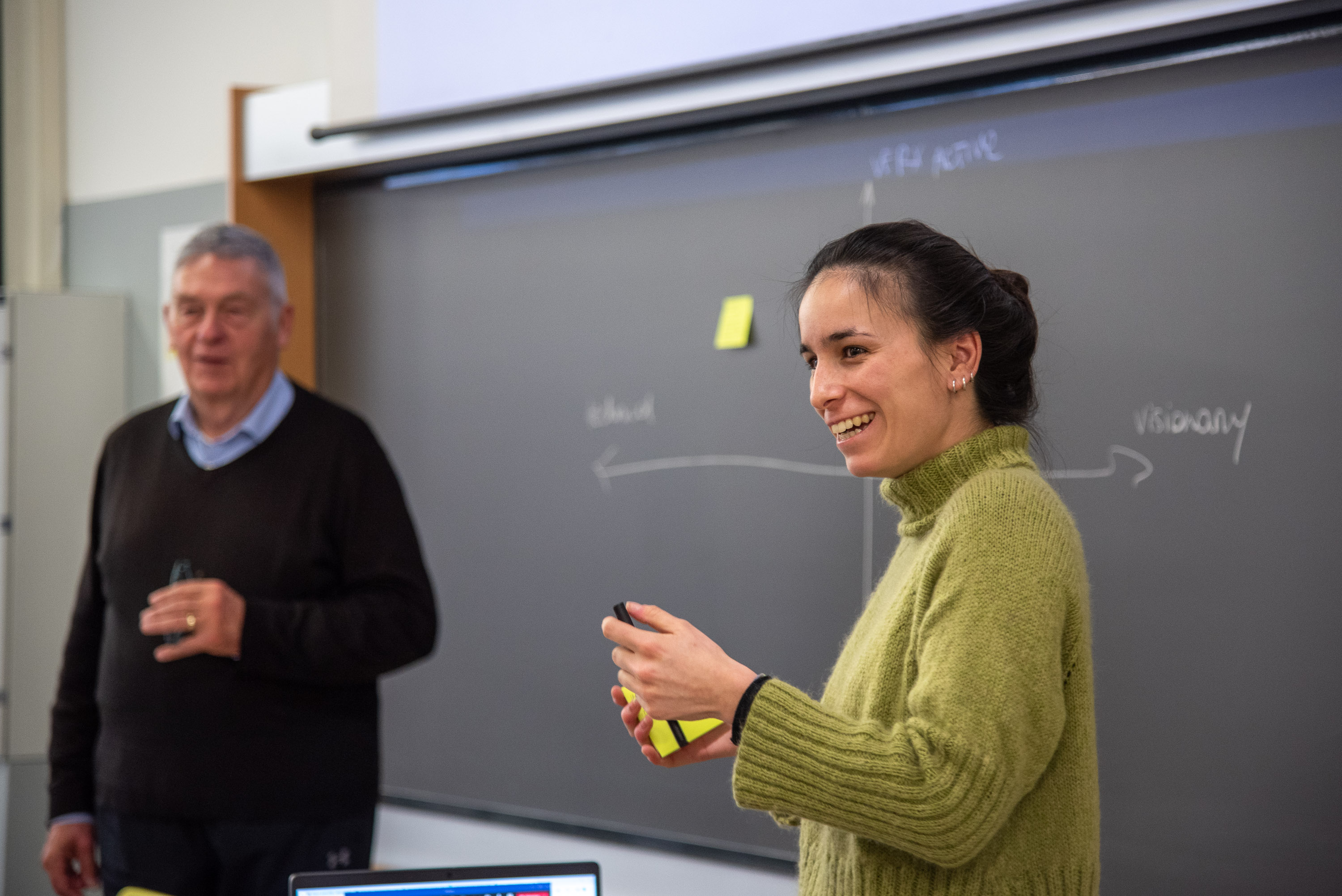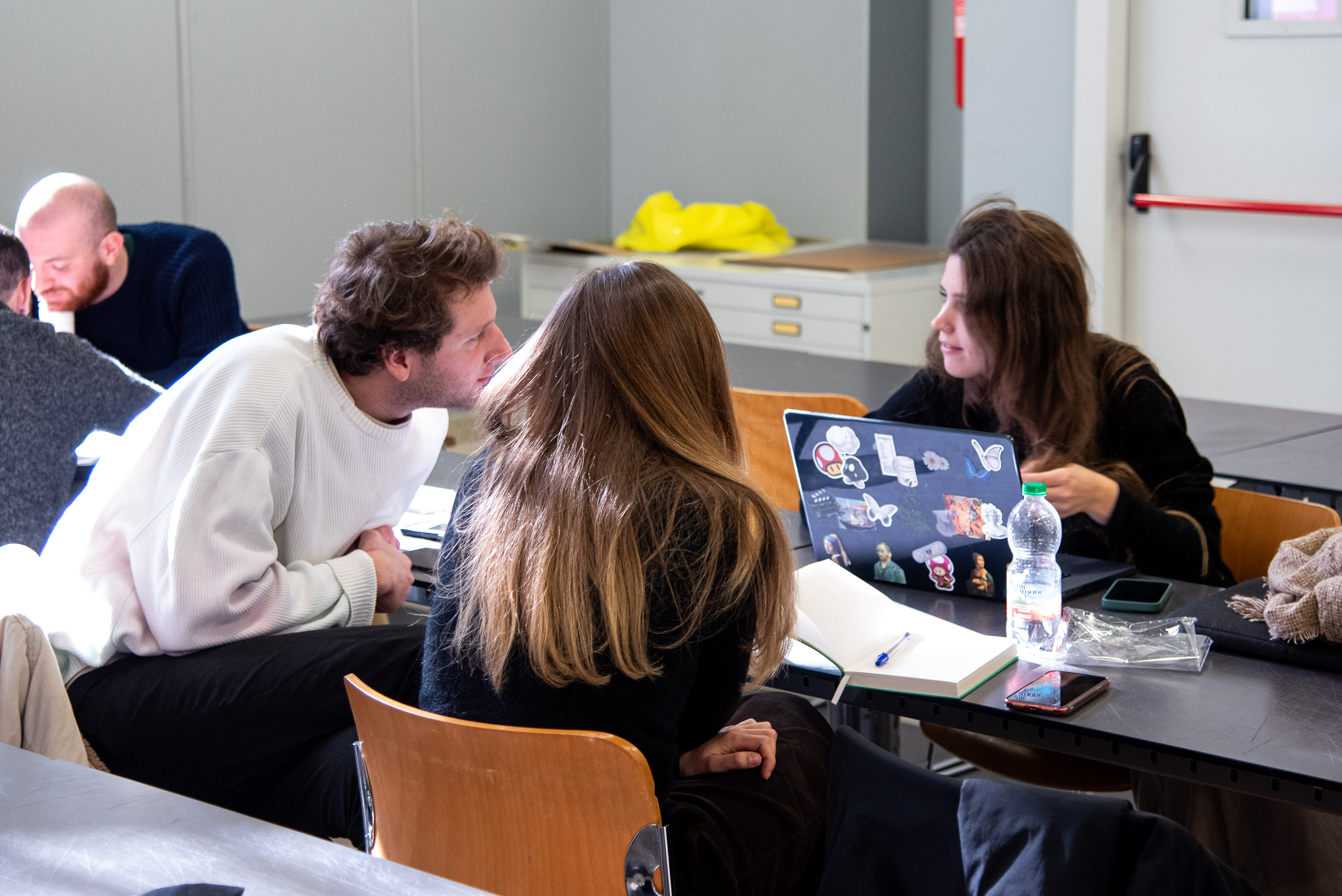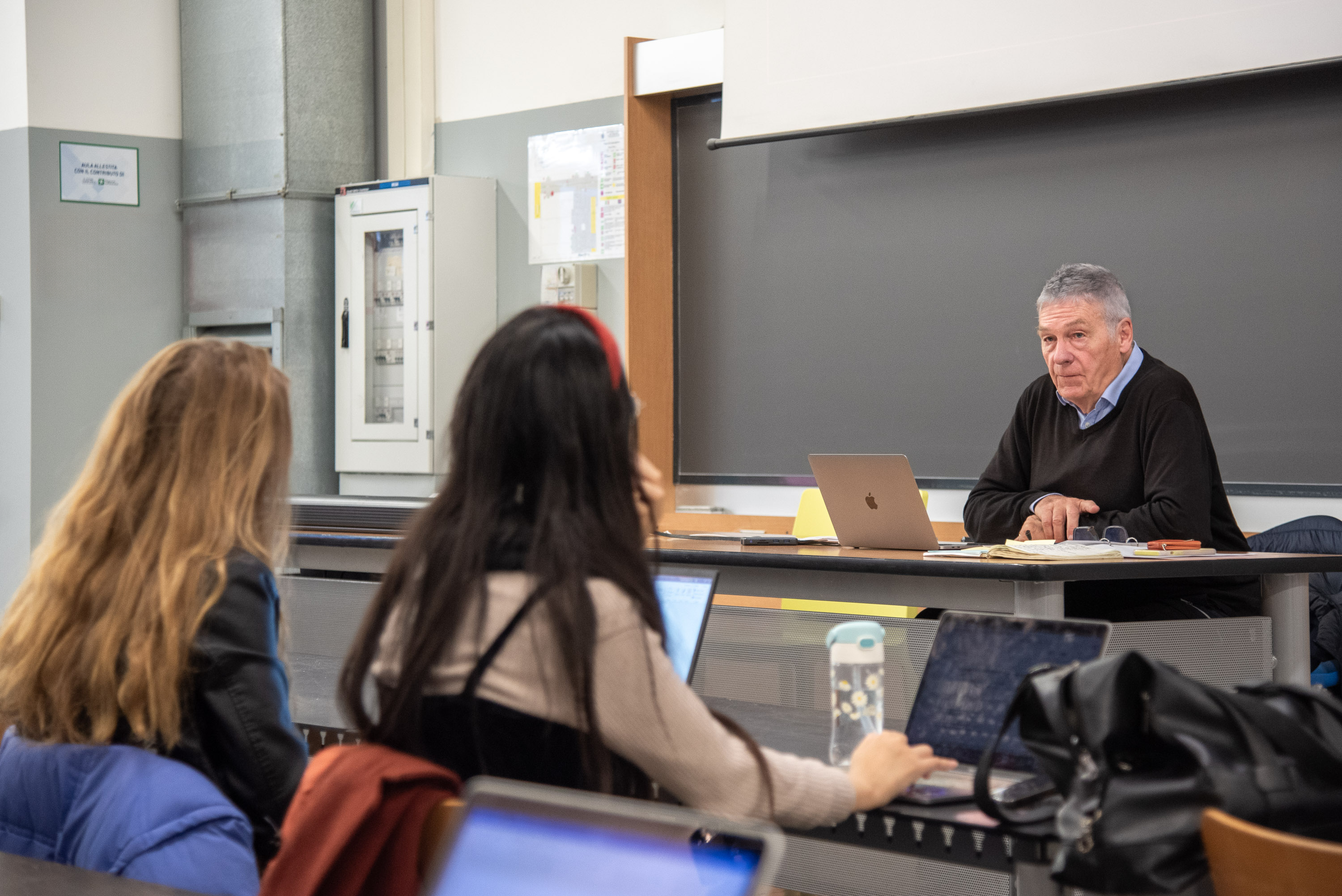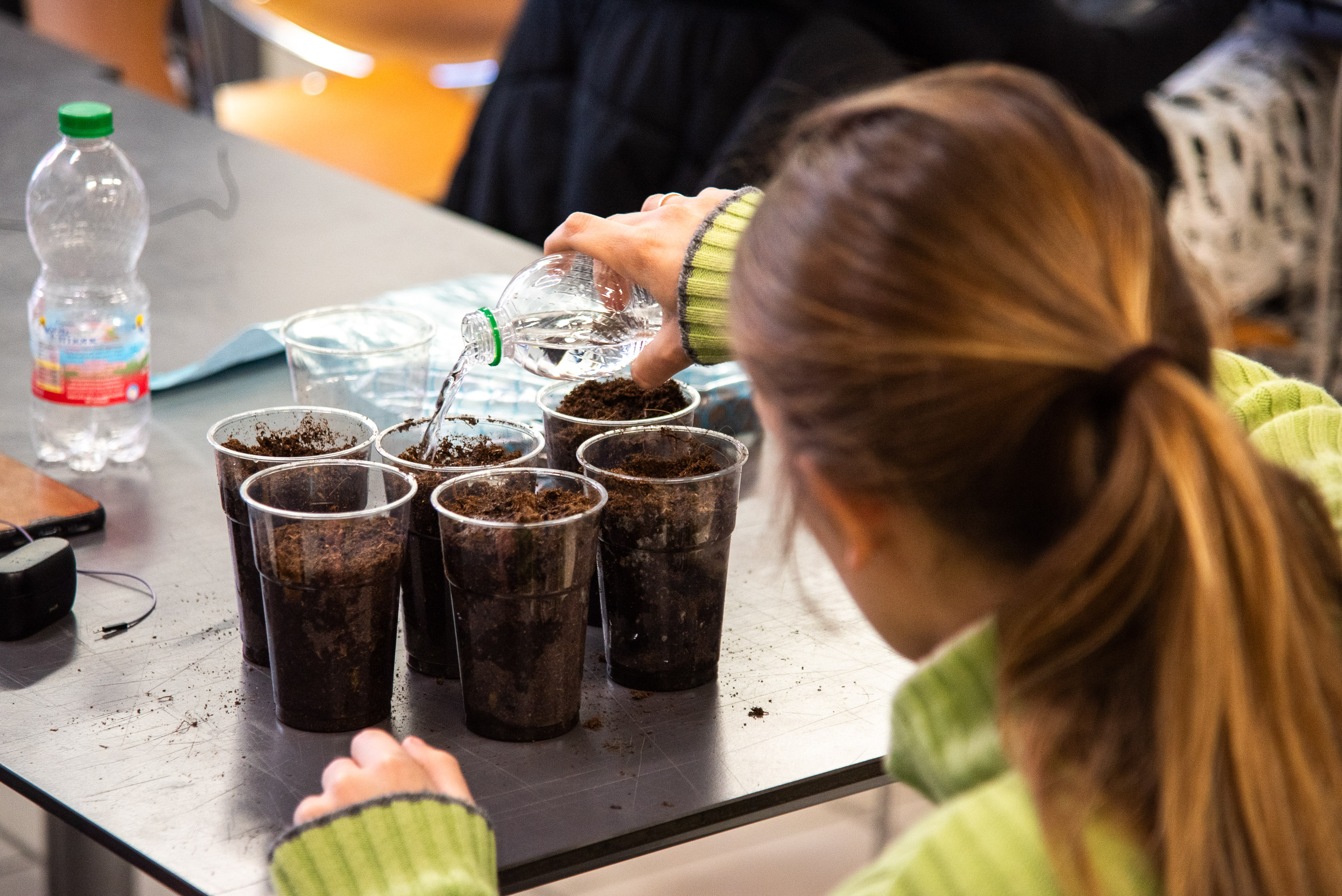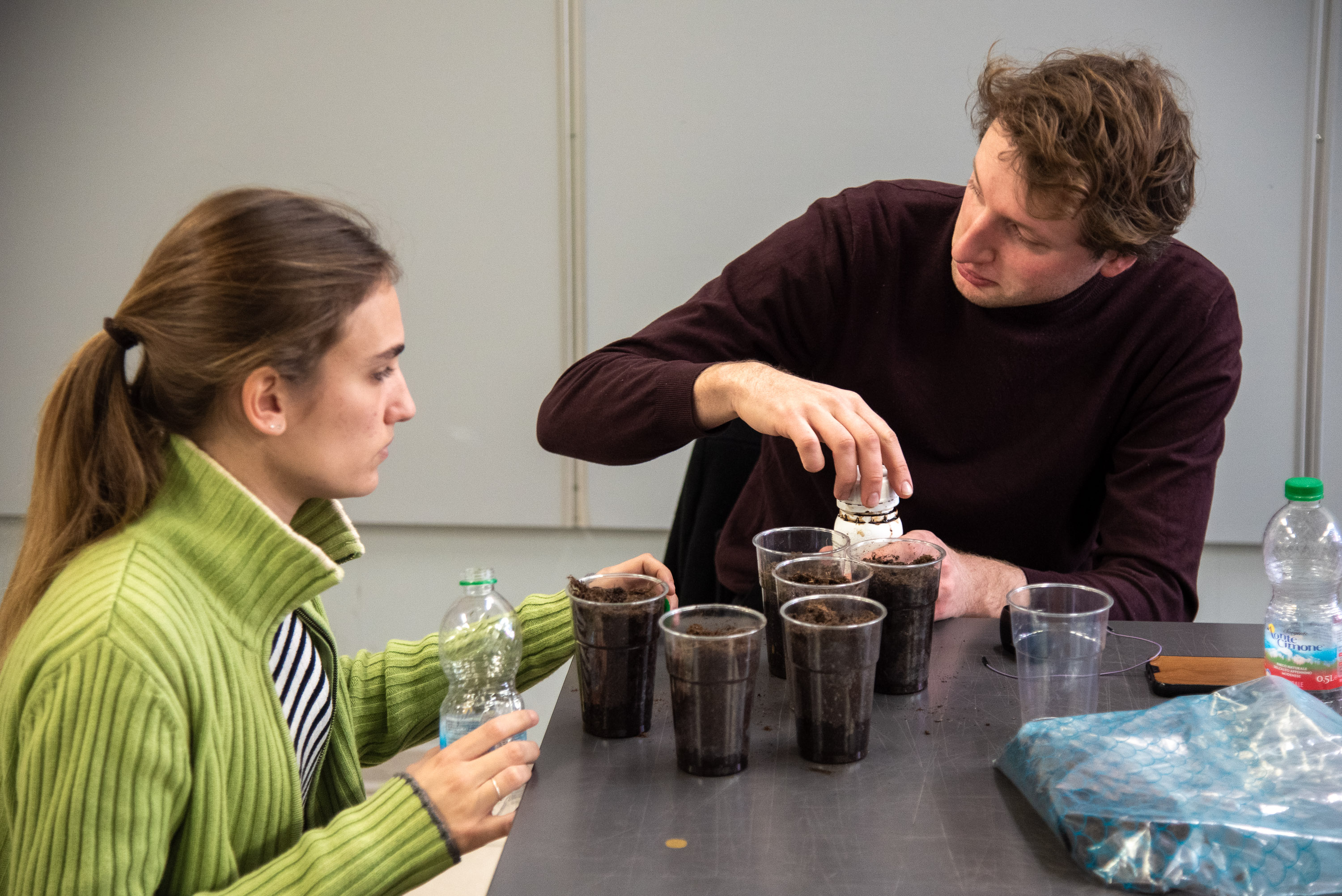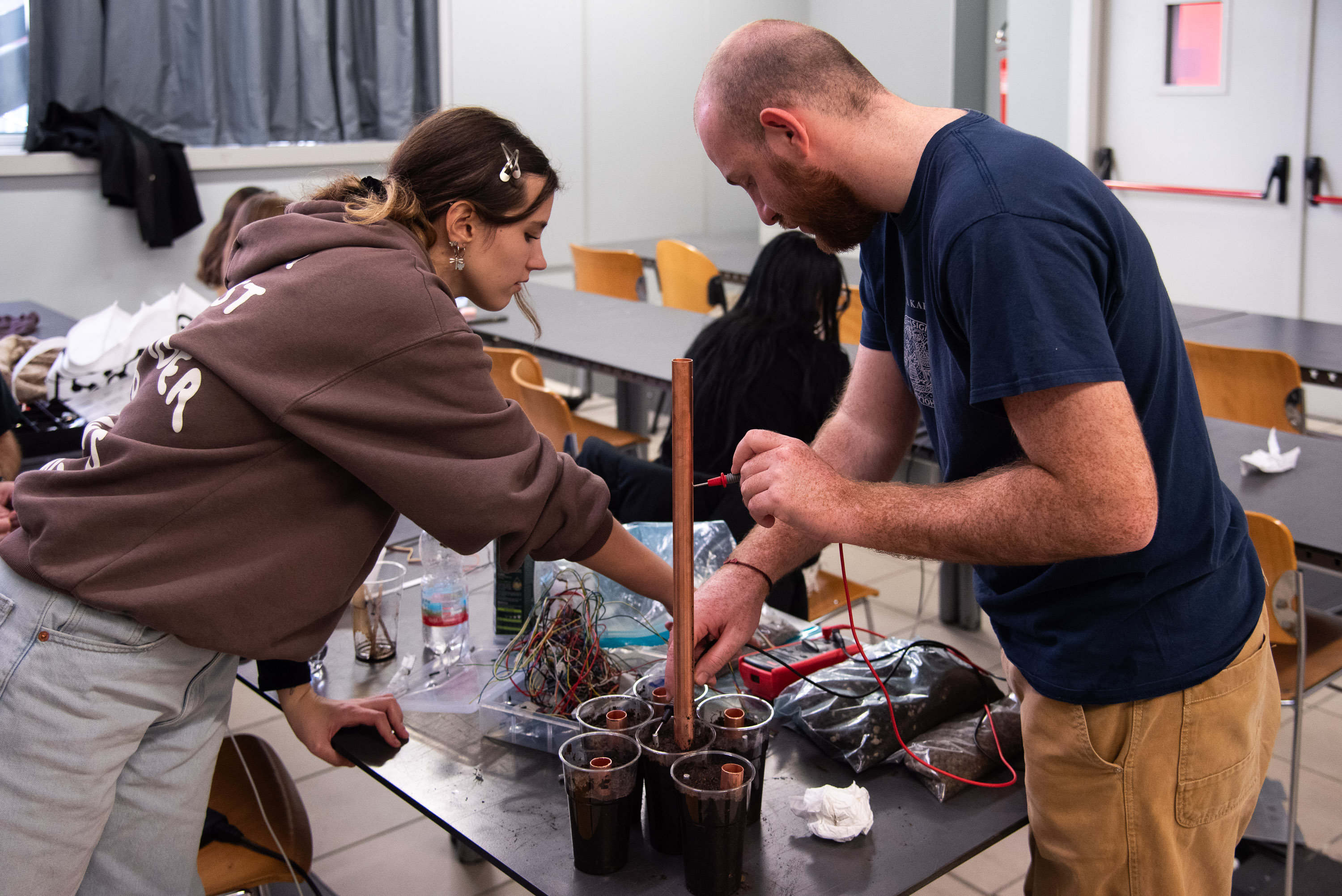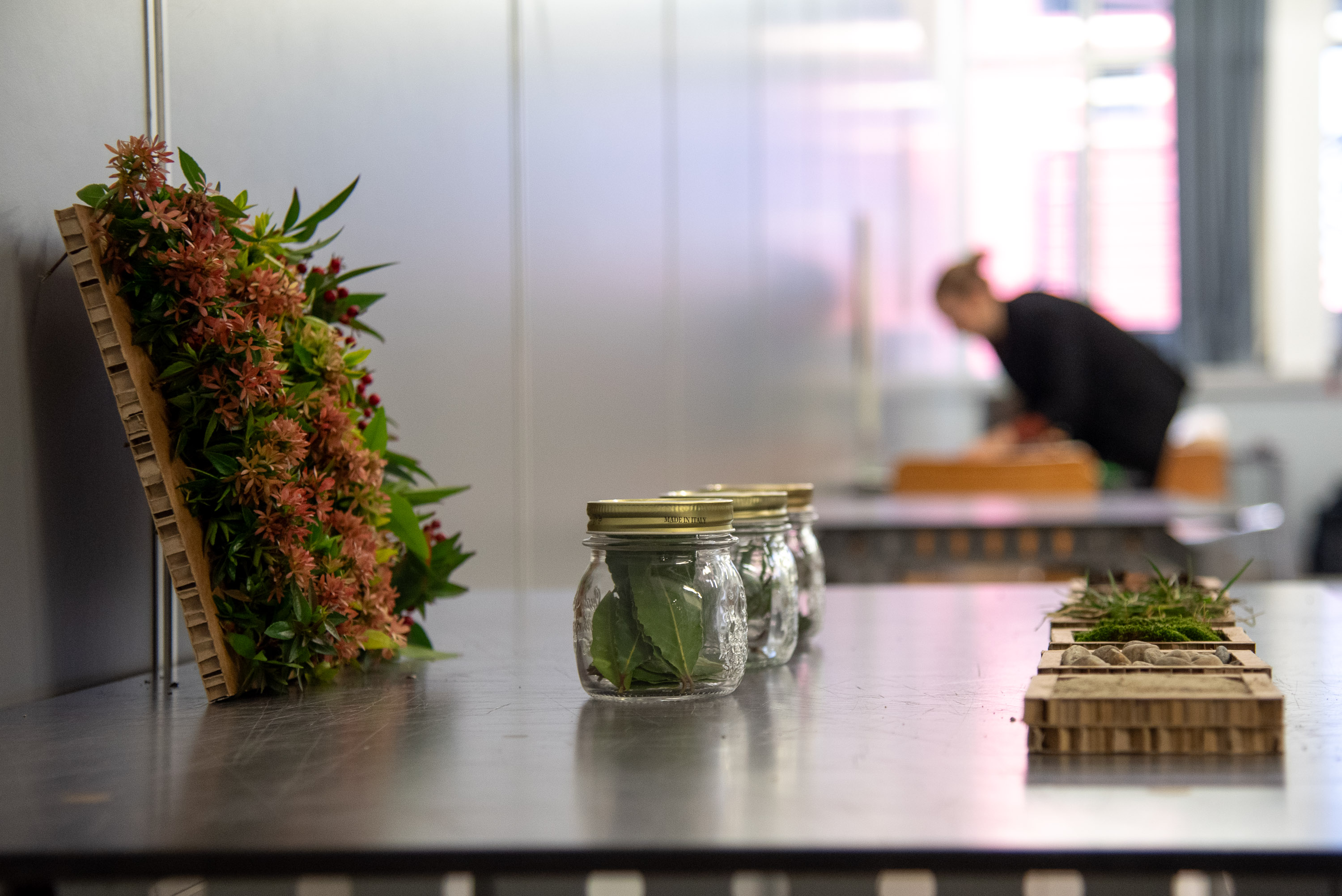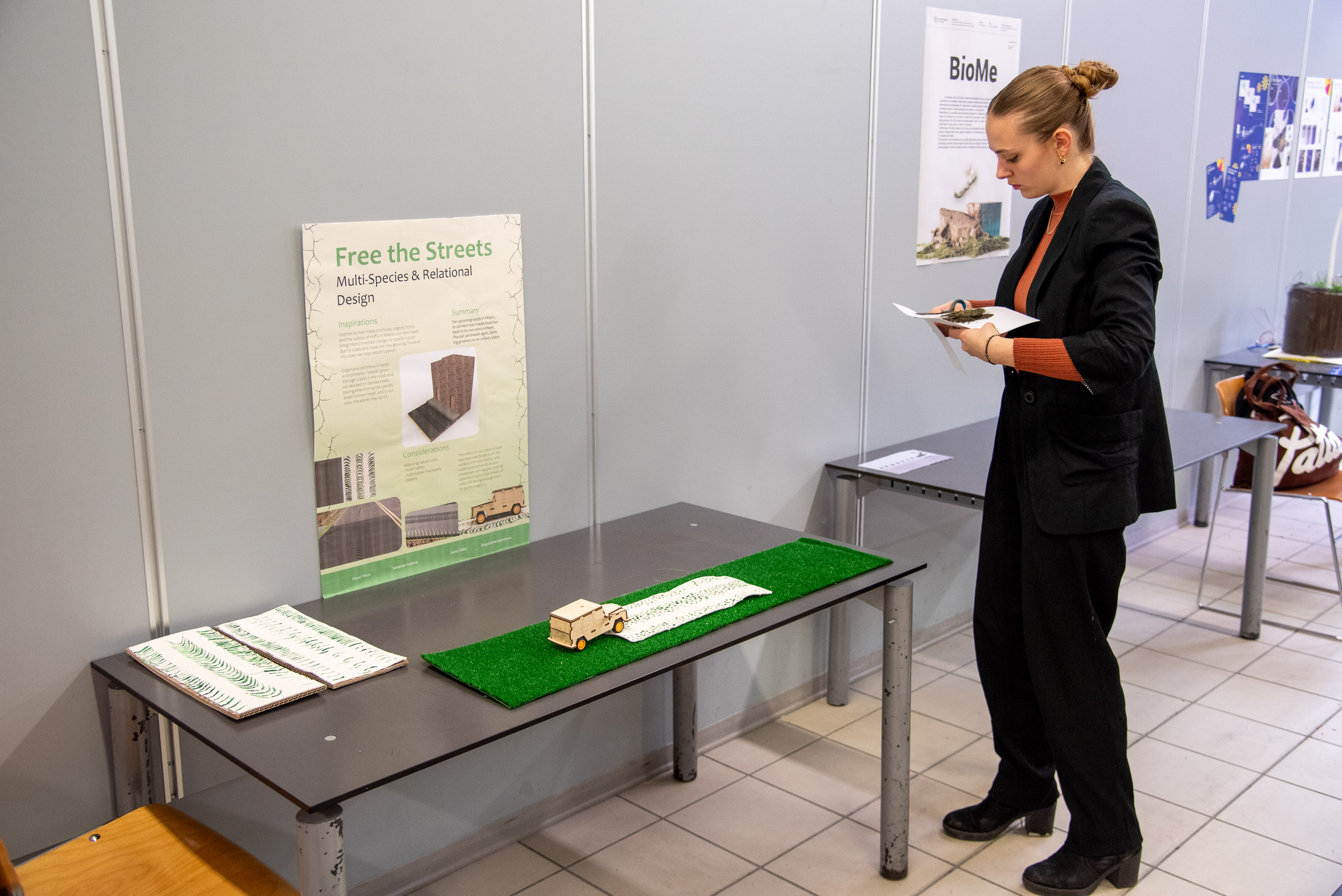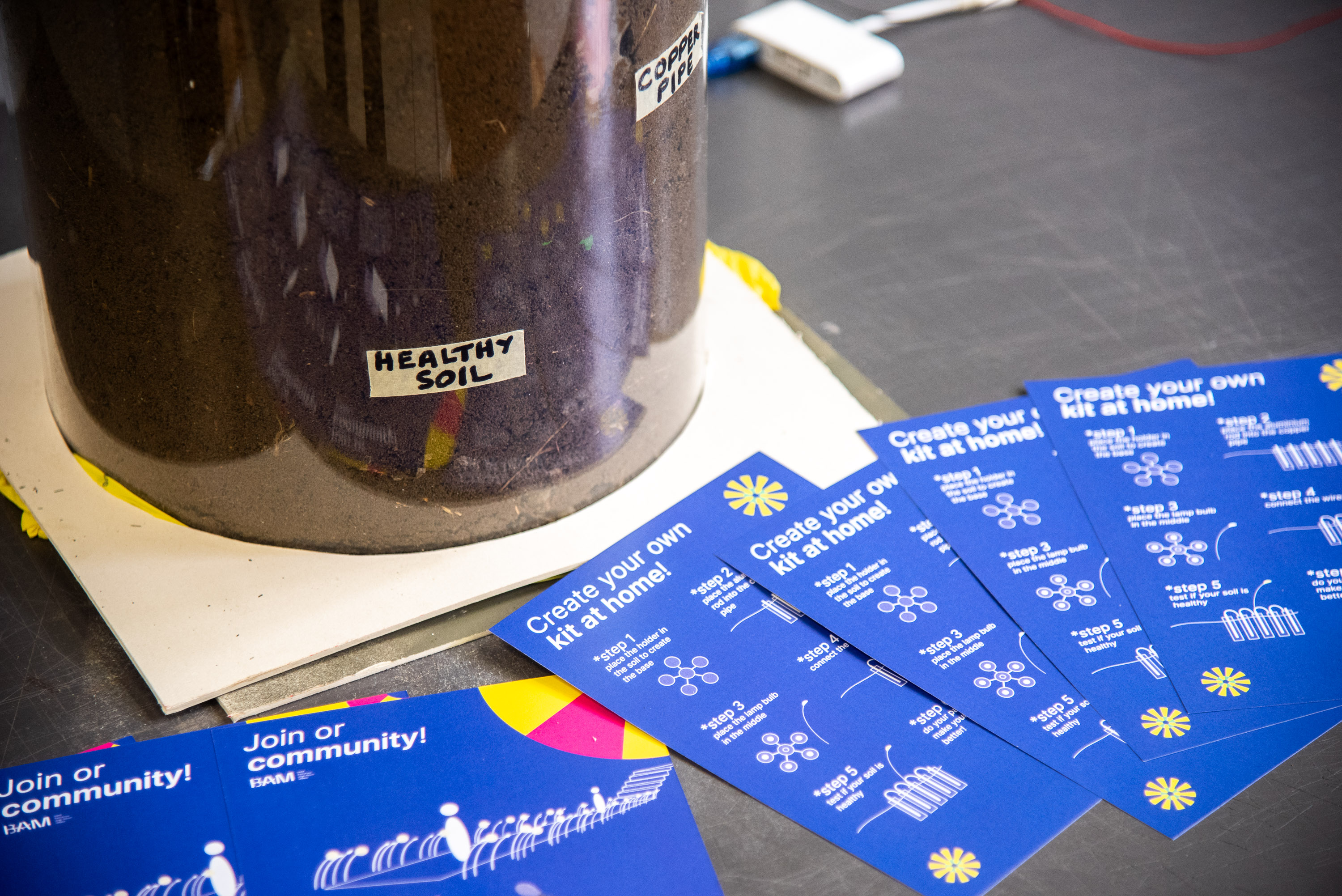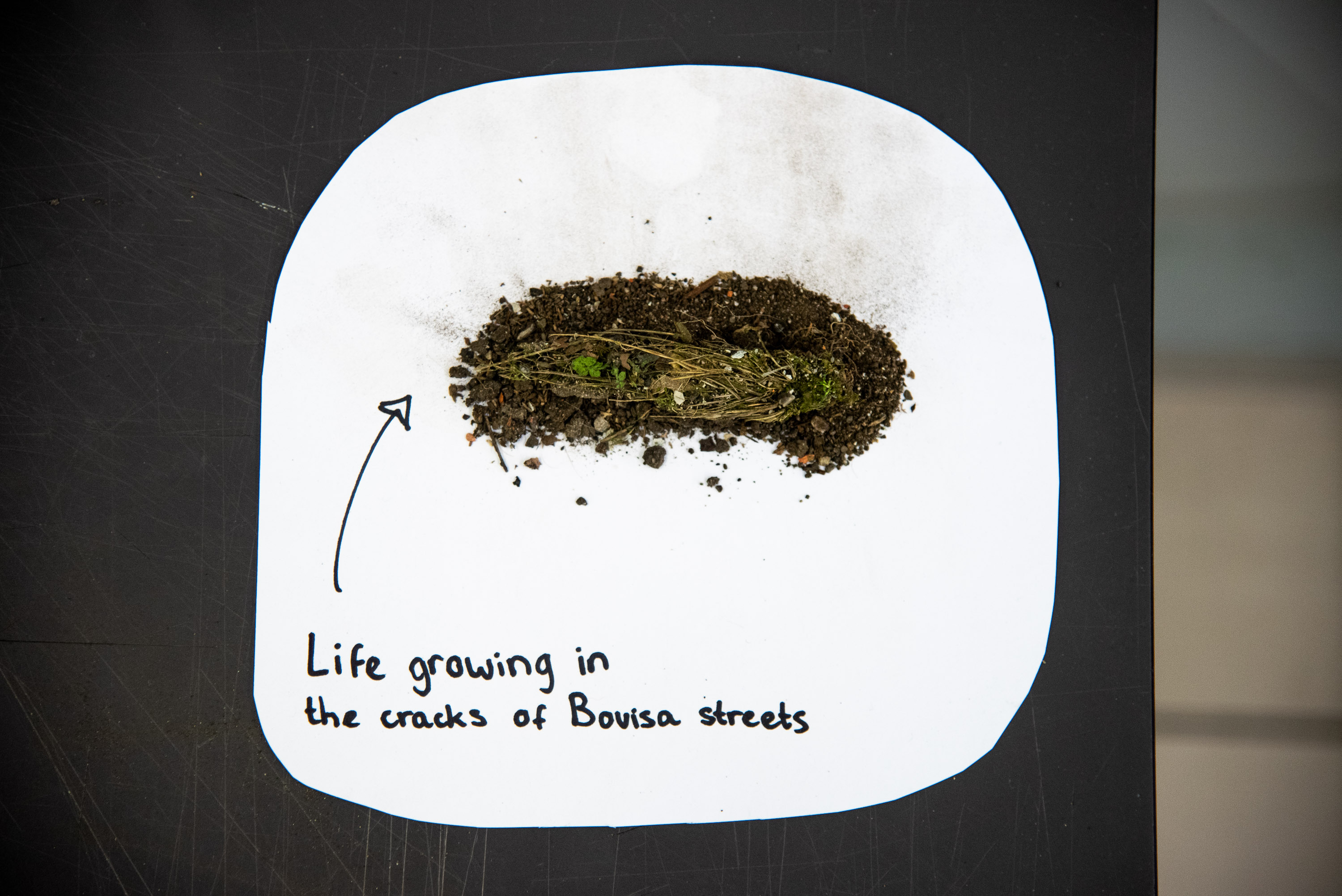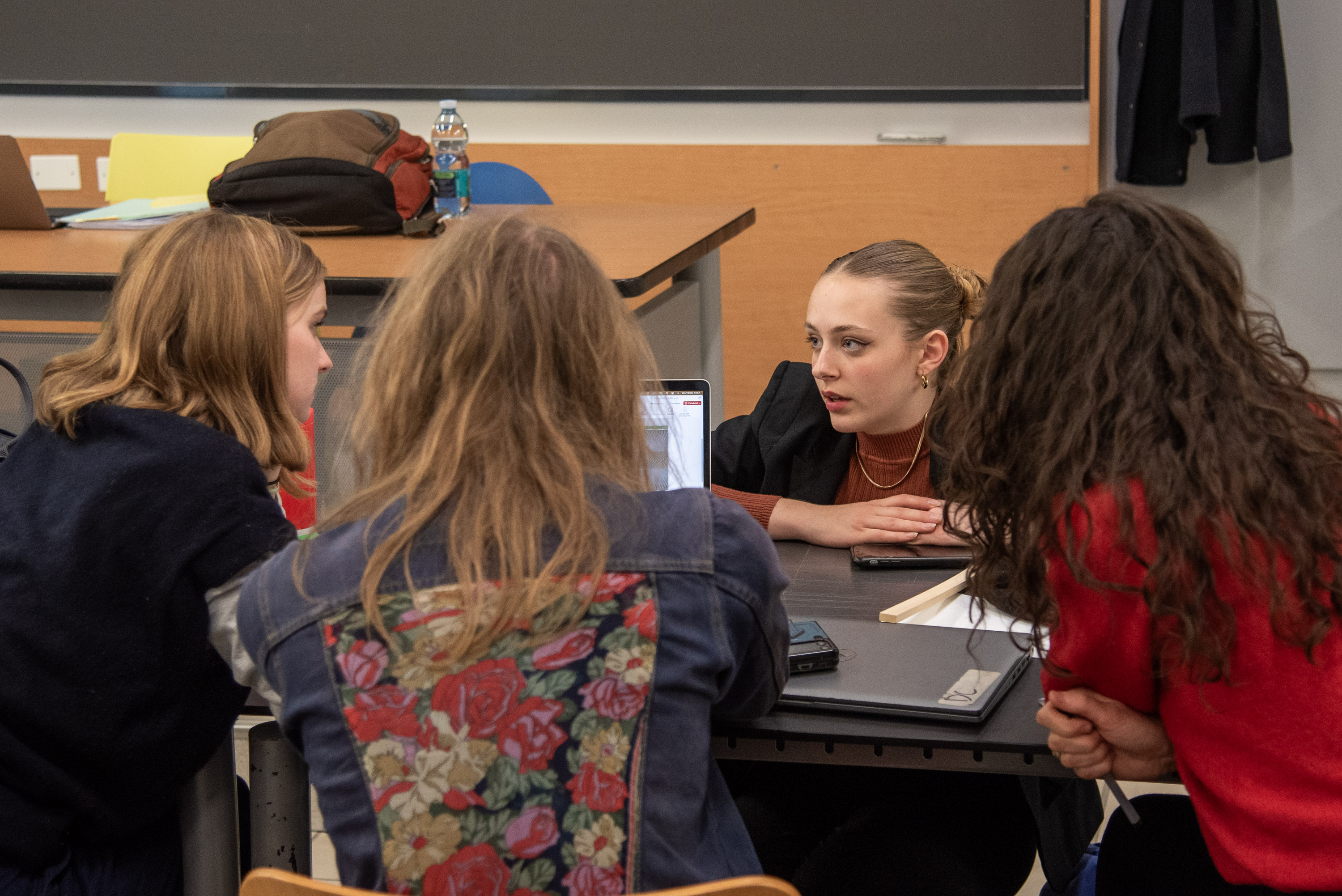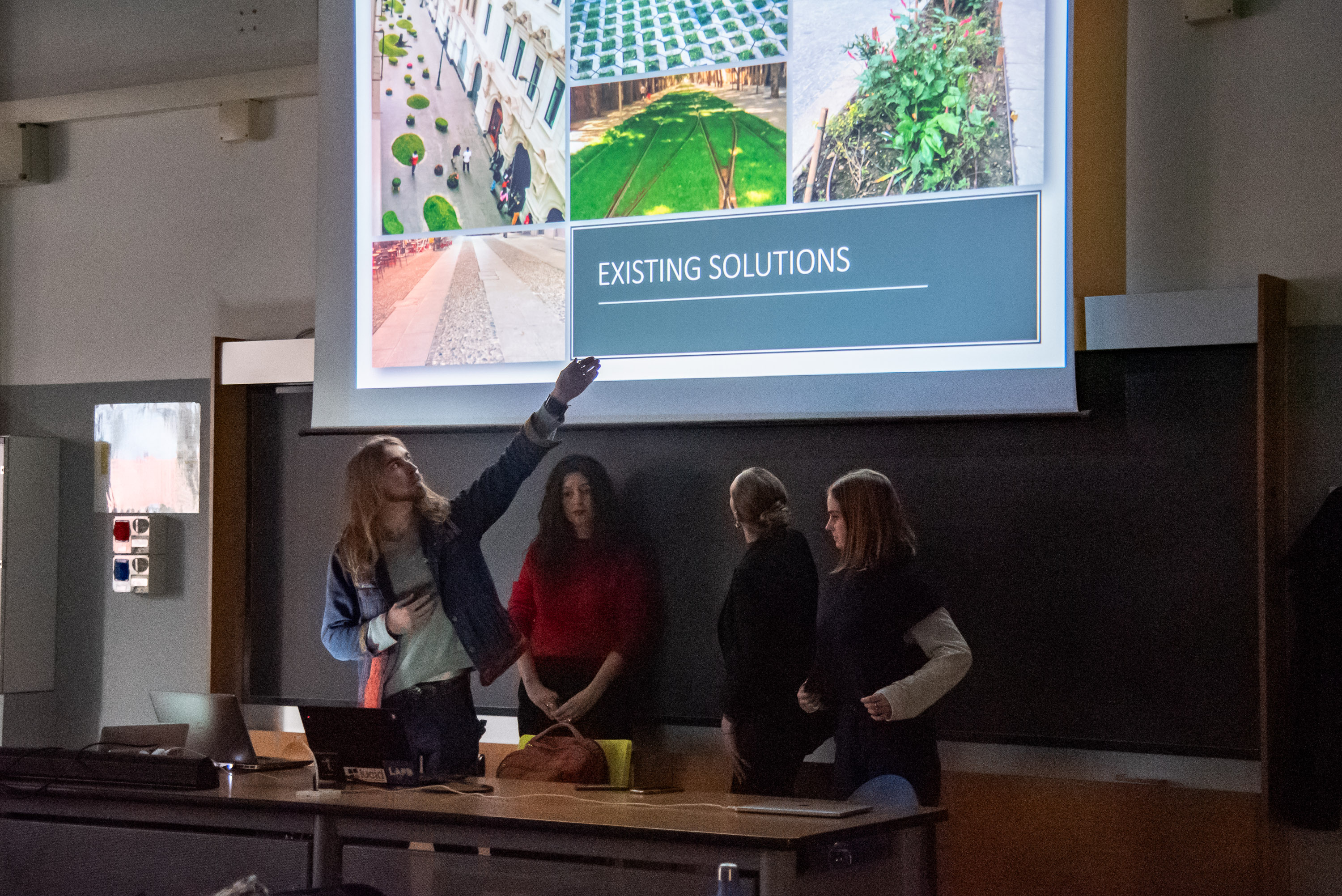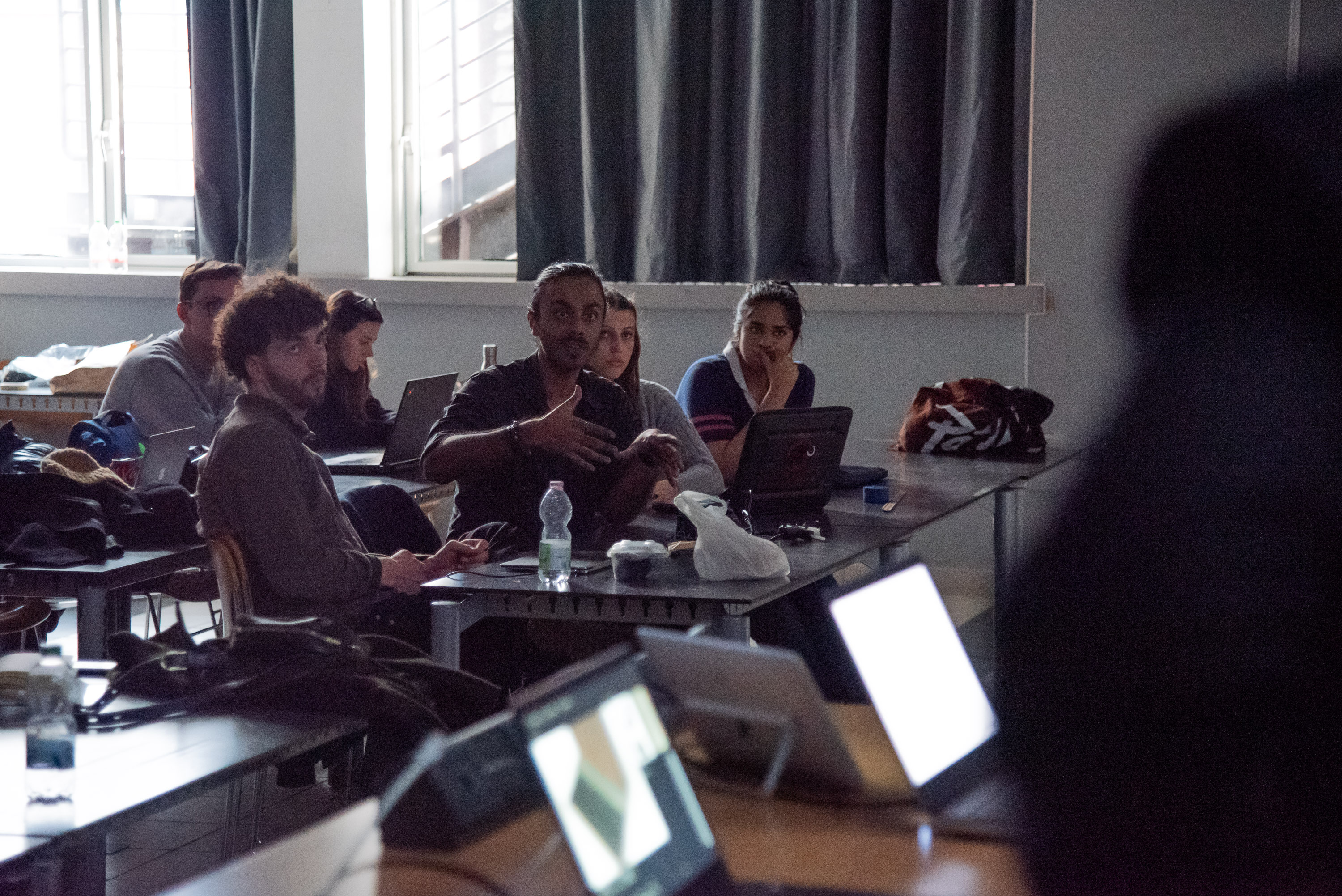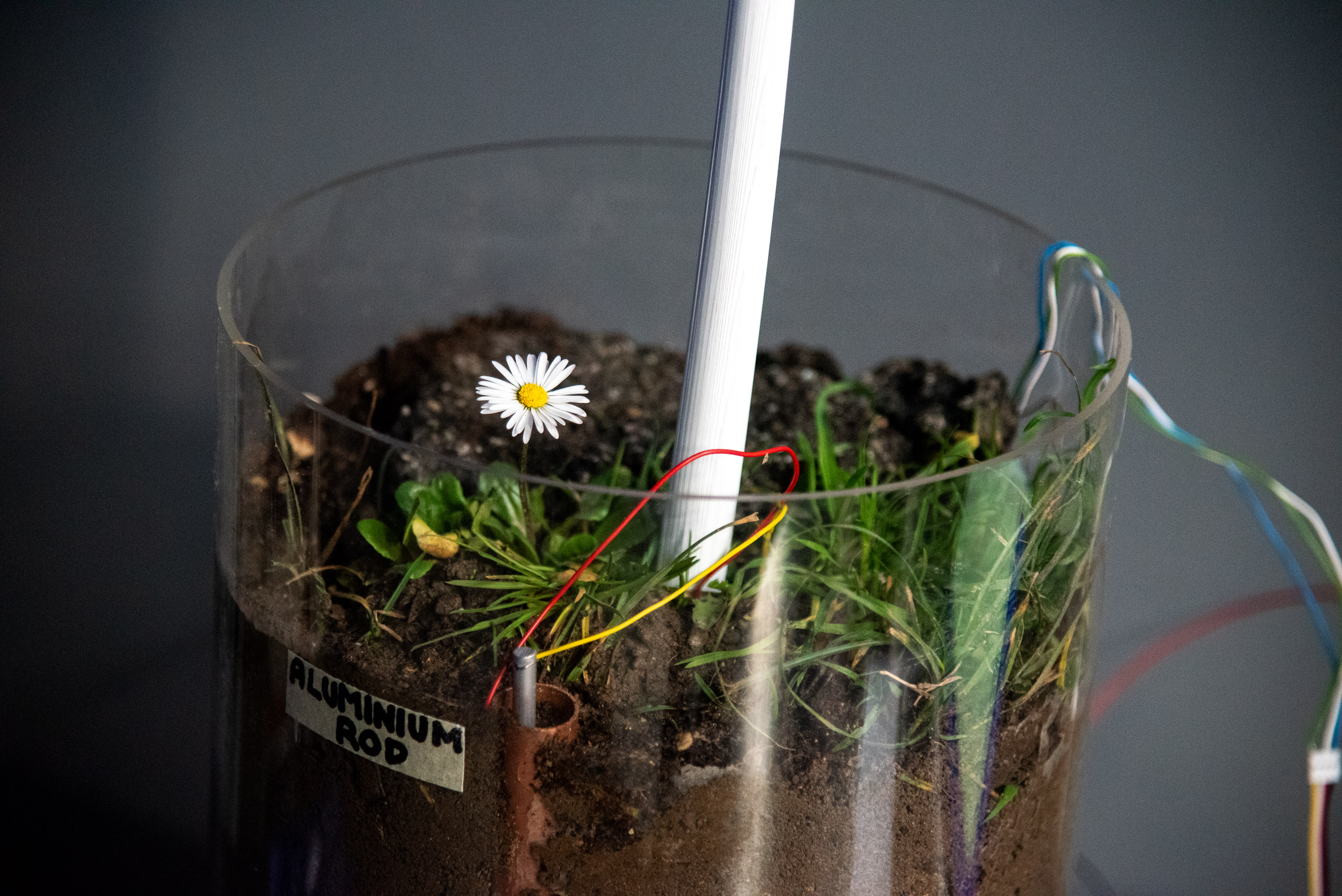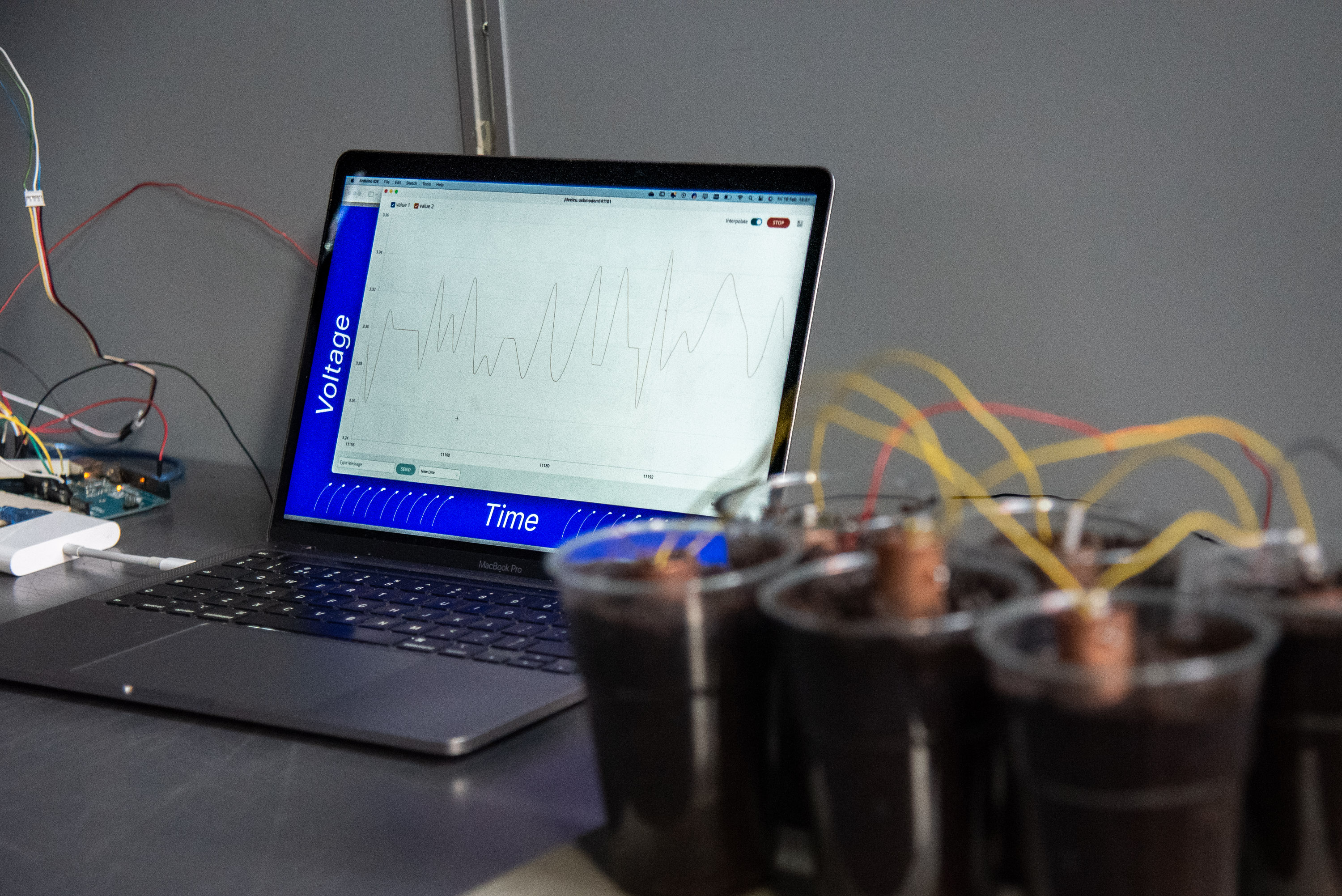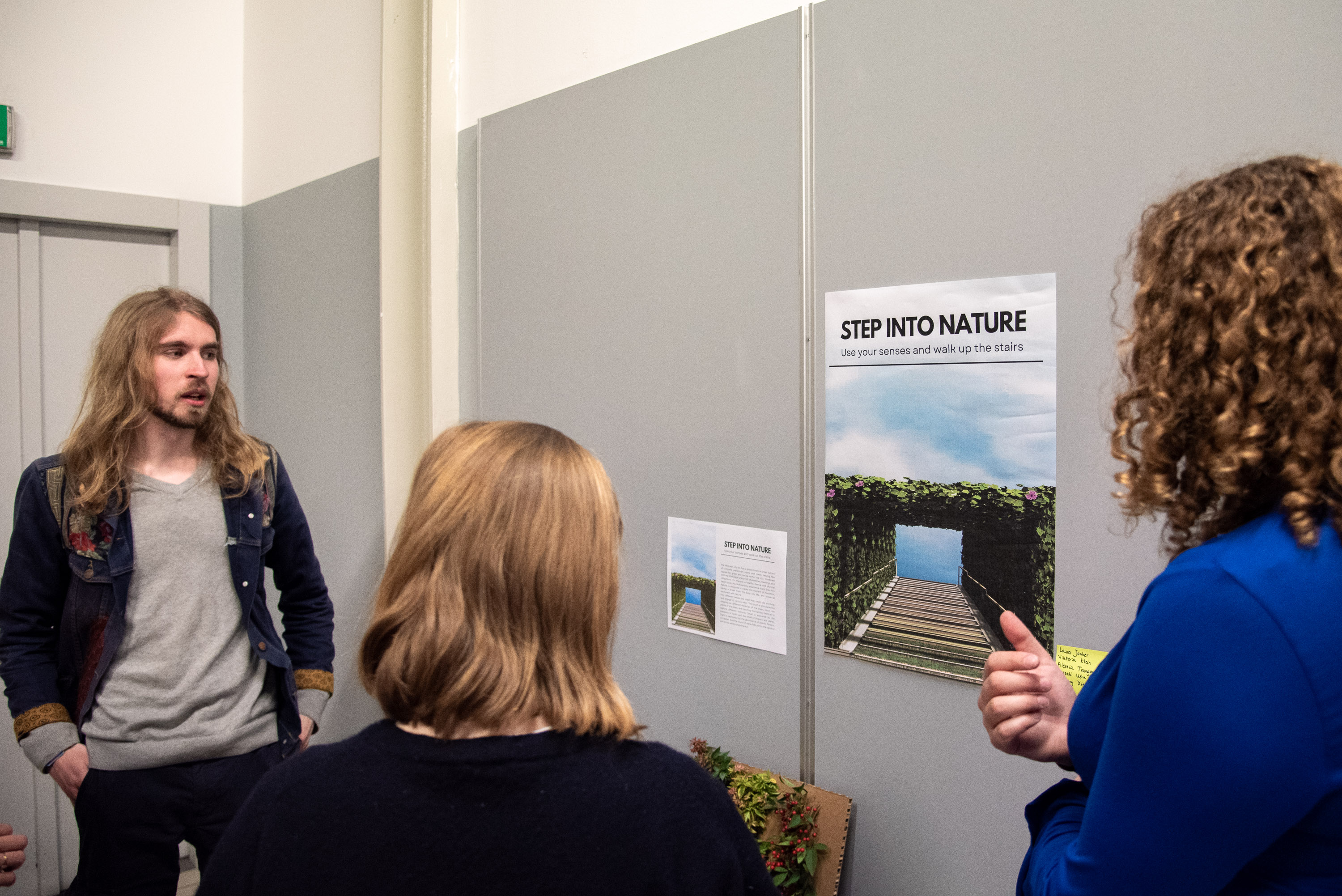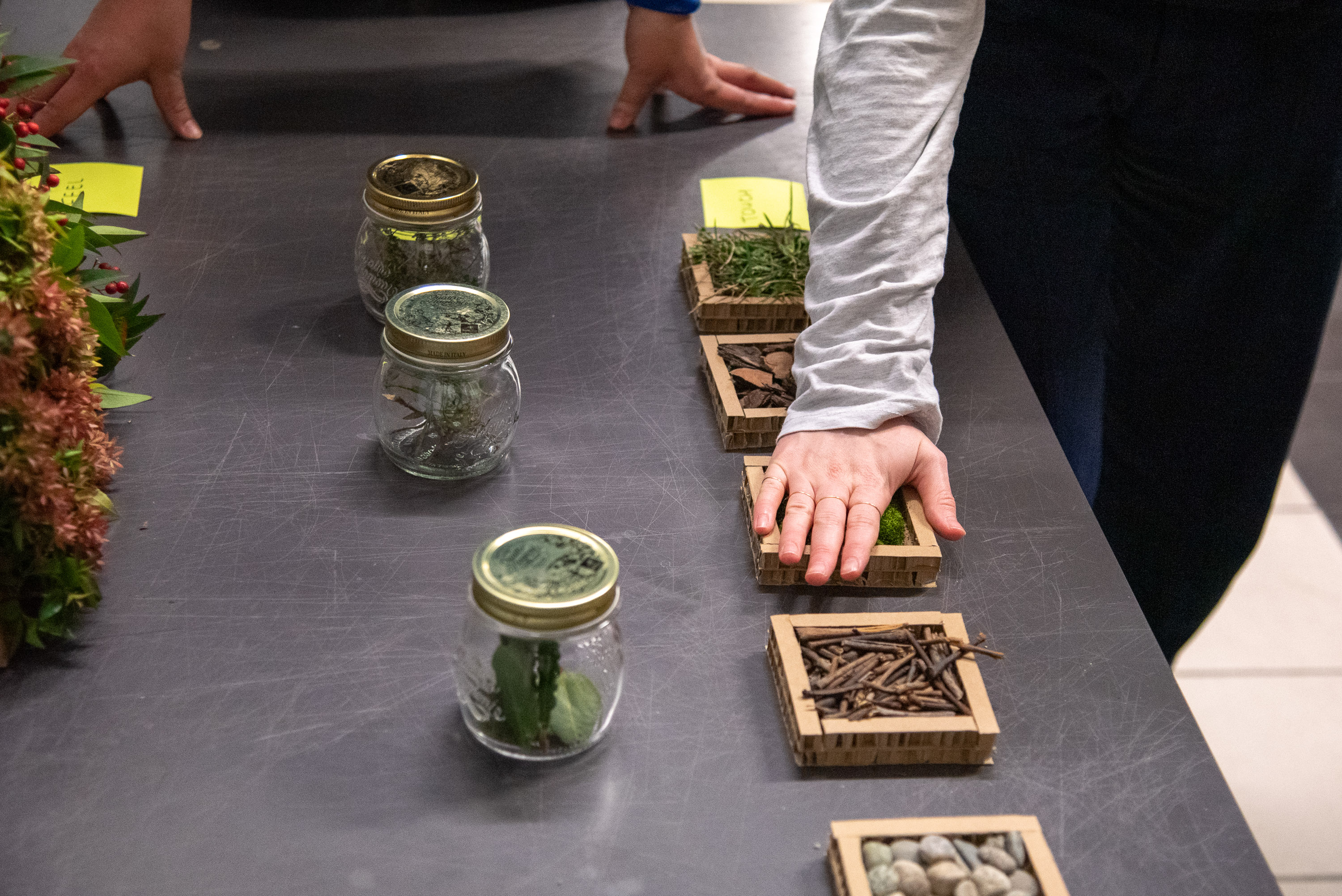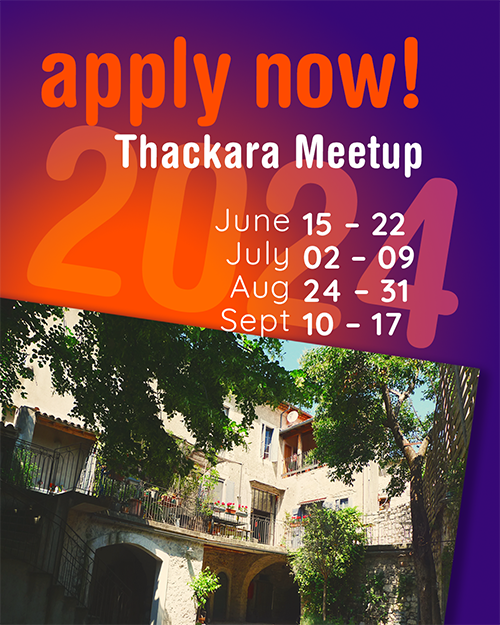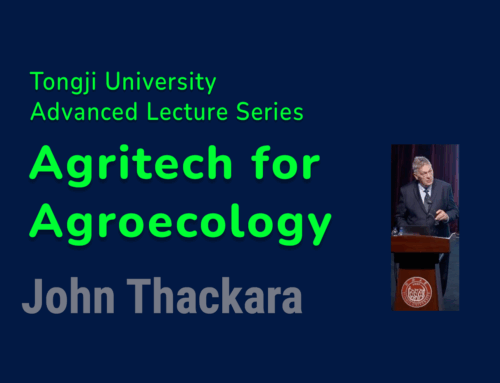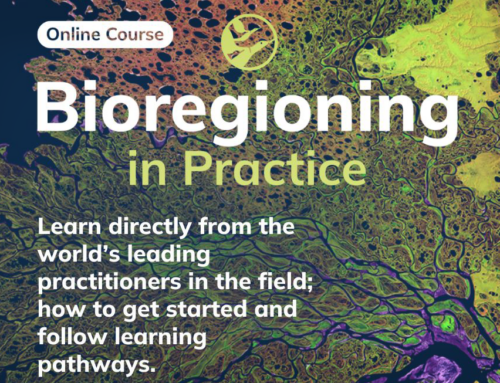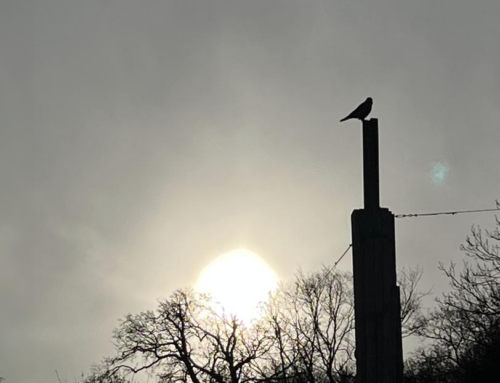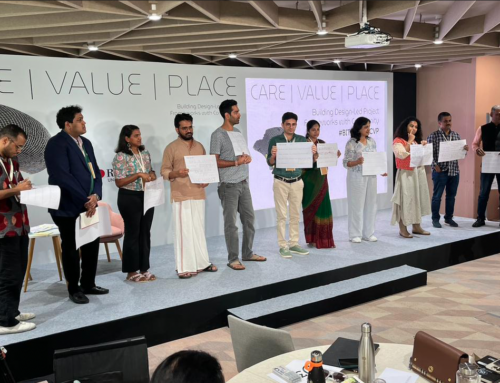(Above: For a third year, the author led an international design workshop, together with Caterina Castiglioni, at the School of Design of the Politecnico di Milano )
People discuss endlessly about what design could do for nature, and vice versa. But the focus of this short workshop in Milan was on the design of tangible interventions.
Twenty international design students were asked to design an urban ecology tool, place, equipment, or experience, that would enhance the interdependence of all of life in practical ways.
This starting point was radical, but not utopian. Millions of citizens already inhabit cities a with other humans, animals, insects and plants, soils – and machines. But they do not, for the most part, do so mindfully.
Besides, there is often more biodiversity in a city’s neglected spaces than in manicured parks and gardens.
These neglected urban lifeworlds exist at multiple scales – from microbiome, to bioregion. But they have been hidden from us, during the modern age, in two ways.
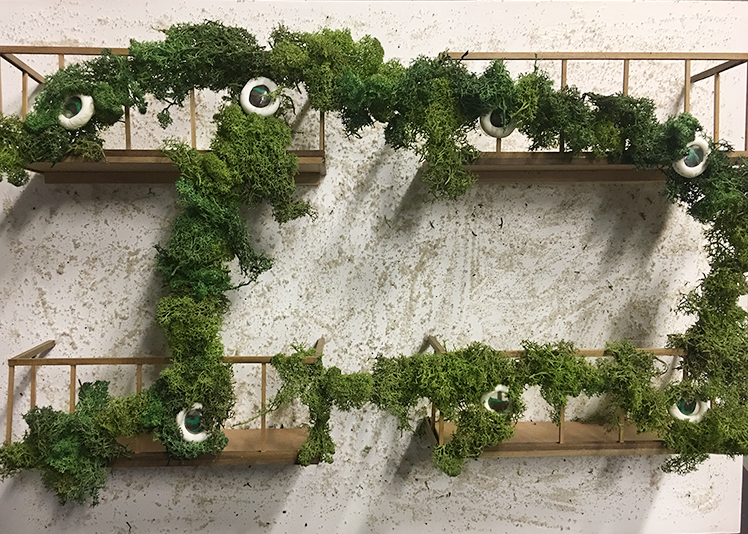
1 Biodiverse balconies
Inspired by balcony-to-balcony sociality of the pandemic years, the LIVVAL team designed a system that helps promulgate a carefully curated ecosystem of microbes, fruits, plants, fungi, and microorganisms. Multiple LIVVAL pods can be attached onto a balcony and, over time, connect with neighbouring vines that grow and extend in all directions. It can be retro-fitted onto any railed balcony.
Team: Rishi Chakravarty, Edward Michele Paul De Turris, Justine Paulus Lutesse, Gourilakshmy Puzhankara
With the added proviso that their idea should should be designed as part of a product-service system – not just a concept – they were given three aspects of green infrastructure to choose from:
Soil Care, Composting, Fermentation
Trees, Microparks, Edible Forests
Microbiome Inspired Green Infrastructure (MIGI)
Lessons learned: The Ecological Turn
Having led this Lifeworlds workshop for three years, here are some reflections.
The first is that although human-centered design was once the pinnacle of progressive ambition, a tricky question now confronts us all: what about the rest of life?
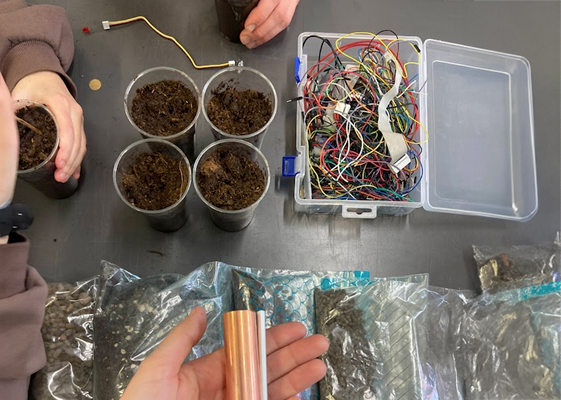
2 Conductive soil
A handful of healthy soil contains a multitude of minerals, fungi, water, roots and bacteria. Healthy soil also, it turns out, conducts electricity and the ability of the soil to conduct an electrical current is an insightful indicator of soil health. This discovery sparked the Exo Electro team to design a system of light-based indicators that would be installed in Biblioteca della Alberti Park (designed by Petra Blaisse of Inside Outside).
Team: Marco Carrara, Marcello Frigerio, Melle Keuchenius, Giulia Odero, Asia Volpi
Biodesign – making things from natural materials – is more nature-focused than human-centered design. But its main driver is greening production, not economic transformation. Building timber houses on unpaved land, for example – or selling soda in ‘plant plastic’ bottles – are variations, but not alternatives, to industrial production. Neither, to put it mildly, improves our wellbeing.
The same caveats apply to the circular economy, or ‘regenerative design’. Unless those activities are tied, explicitly, to the health of living place, they risk being used as feel-good decoration for business-as-usual. Regenerating a bioregion is meaningful, embodied, work. A regenerative airline, less so.
Gabriel Alonso, co-founder of the Institute of Postnatural Studies in Madrid, reckons the next step is to ‘de-sterilise’ design. He wants us to question relations we take for granted between hygiene, microbes, and domestic design.
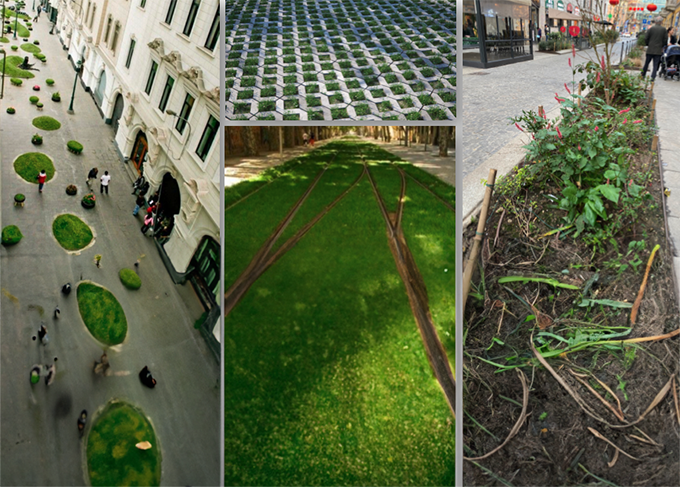
3 Plant-friendly Depaving
Milano may be the capital of design, but it can also be experienced as a concrete jungle dominated by hard surfaces and polluted air. The city is not atypical. There are 1.2 million km2 of impervious surface area in the world: ecopiatech.com/blog/impervious-surface-mapping.
Inspired by their observation that plants that grow through cracks in the concrete, the Free The Street team devised a depaving system that creates space for plants without compromising the safety of road traffic. Organic patterns in the roads do not affect braking distances, nor the health of tyres.
Team: Jamie Daniel Miller, Savanne Noijons, Maud Marie J Wets, Magdalena Rajnohova
We need to move on from a one-sided concern with human health to what he calls a a ‘postnatural perspective’ We need to design for a world of coexistence between species. We need to consider kinship, mutualism, symbiotic living, and hospitality, as proper subjects for design.
These new worlds for design – kinship, mutualism, symbiotic living – are also explored in book of essays published in Bologna called The Ecological Turn.
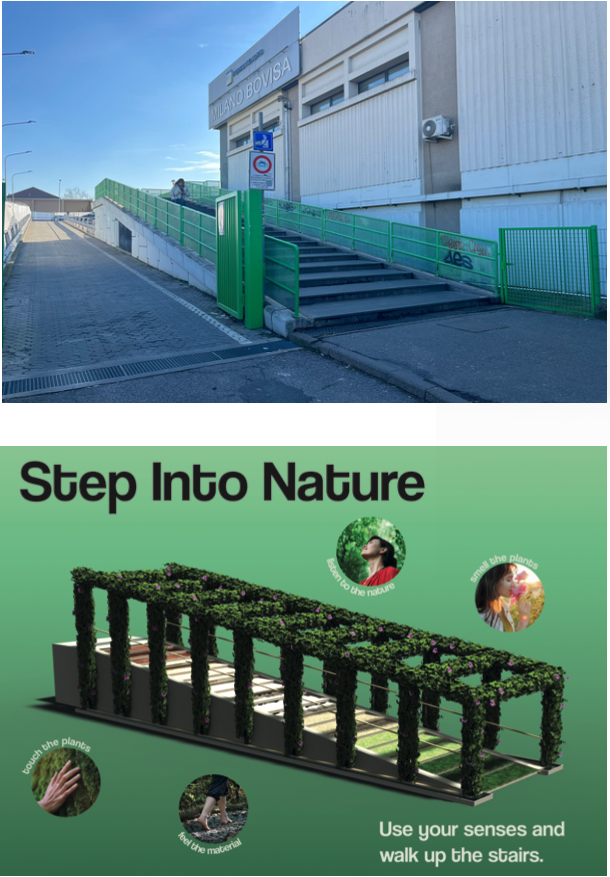
4 Probiotic Pergola
The Step Into Nature team chose the most technically difficult site of any group – a stone staircase outside the busy railway station of Bovisa. Part of their proposal – adding plants to the steps themselves – is implausible in the real world of safety regulations and transport bureaucracies.
And yet, and yet: cities all over the world deploy planters containing flowers to enhance urban contexts – so why not an urban pergola, like this one, as a three-dimensional growing medium? Such pergolas could serve as butyrite pathways. Butyrate, a probiotic important in human and ecological health, can be produced by certain outdoor soils and plants.
sciencedirect.com/science/article/pii/S2405844020323173 pubmed.ncbi.nlm.nih.gov/33684759/
Team: Laura Jonker, Viktoria Klein, Alessiadio Trangoni, Nursewli Uslu, Yingying Xiahe
A practical example of the ecological turn in design is microbiome-inspired green infrastructure, or MIGI. One of MIGI’s pioneers, Jake Robinson, describes in Probiotic Cities how environmental microbiota can be included in design and construction contexts, and thereby increase ecosystem functionality. “Being less exposed to health-promoting microbes means we are subject to all manner of chronic inflammatory disorders” Jake explains; “MIGI can enhance the wellbeing of people who living in super-hygienic environments”.
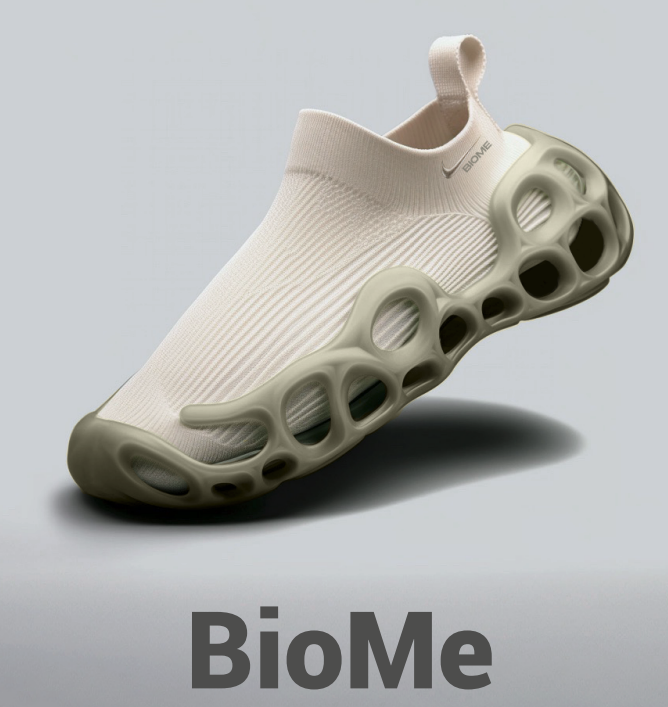
5 Ecological shoes
Inspired by the need for urban ecological corridors, the BioMe team designed a shoe that allows people to transport microbes from one biodiverse area to the next. The high porosity of its 3D printed reticulated latex soles it complemented by little spikes that help crack leaves on the ground; this contributes further to overall soil health. A mobile app helps users follow microbiome-rich routes
Team: Chiara Riva, Arianna Sangtoro, Claudia Spino, Riccardo Tovagliere, Margherita Ranieri
Business-2-Place (B2P)
Another lesson from these workshops: Design for all-of-life – lifeworld design – is an opportunity, not a threat, for legacy design disciplines.
Social innovation, for example, simply needs to expand the range and type of actors involved in its work: a society of all living beings. The same goes for service design, and systems oriented design.
Coexistence, kinship, and symbiotic living, can all benefit from their participation.
Going forward, design nonetheless needs to learn from and with new people – and not just in design schools such as Polimi. Gabriel Alonso’s vision of ‘de-sterilized’ design is inspired by contemporary philosophers and scientists such as Donna Haraway, Anna Tsing, and Lynn Margulis. He learned from them that microorganisms can be our allies.
Because each and every urban context is unique, diverse skills and capabilities will be needed, in each situation, to help nature thrive. Design, on its own, cannot possibly cope with this complexity.
Open knowledge-sharing platforms, such as a peer-to-peer learning circles, will be needed to help designers seek out local, site-specific answers, and share “what works” solutions across their network.
At a municipal level, the complexity is even greater than it is for design practice. Depaving, for example, or a MIGI strategy for public buildings, involve multiple city functions and departments. There’s surely space for a new kind of enterprise – Business2Place, or B2P – to help cities coordinate the multiple actions in caring for their places.
Making a city bicycle friendly, and nature friendly, are both complicated. As a precedent for B2P, therefore, I often quote Copenhagenize. This multi-multi-disciplinary firm does bicycle planning, policy development, and service design for municipalities and regions.
See also:
Video/talk: From Microbe to Bioregion, Designing for Life
Blog: Nature as Infrastructure (last year’s workshop)
Blog: Design for multi-species cities (the first of these workshops)
